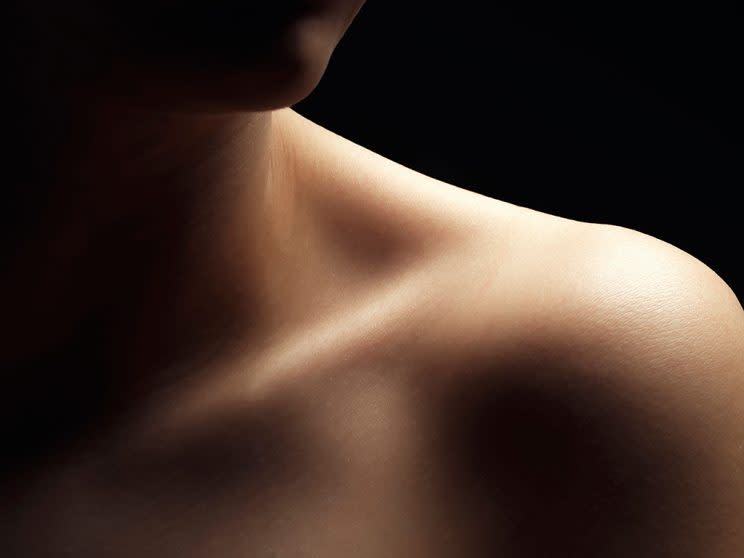Here’s the Secret to Why Our Skin Doesn’t Leak

The skin is one of those organs we tend to take for granted. While you probably clean it regularly and moisturize often, you take for granted that it’s going to stay put and do its job, instead of randomly leaking blood.
Now scientists have discovered why we’re able to make that assumption: Your skin is made up of a unique arrangement of shapes called tetrakaidecahedrons, which never leave a gap. That’s especially impressive, since people shed about 500 million skin cells every 24 hours.
The findings, which were published in the journal eLife, come courtesy of researchers in Japan who wanted to determine why human skin is able to form such a protective barrier, despite regularly shedding cells.
But first, a little Skin 101: The outer layer of skin — the one that you slather sunscreen and lotion on — is called the epidermis. Previous research has found that the epidermis itself is made up of several different layers, the researchers noted in the study.
The epidermal layer closest to the surface is an air-liquid barrier called the stratum corneum. Below that is a liquid-liquid barrier created by tiny, narrow areas between skin cells, known as the stratum granulosum.
The stratum granulosum essentially makes sure that your skin doesn’t leak fluids, such as blood, but also manages to do so while helping your skin shed and replace old skin cells. New skin cells from the lower layers of the epidermis replace the old skin cells at the stratum granulosum layer before the old ones move up to the outer layer of the epidermis, where they’re sloughed off.
In the study, researchers used an imaging technique to analyze stratum granulosum cells in the ears of mice, and found that their special shape allows skin cells to move through without breaking the barrier, causing fluid leakage. That shape is a flattened version of a tetrakaidecahedron, a 14-sided polyhedron with six rectangular and eight hexagonal sides.
While the results seem surprising to many, Gary Goldenberg, MD, medical director of the dermatology faculty practice at the Icahn School of Medicine at Mount Sinai, tells Yahoo Beauty that they’re not to dermatologists. “Our skin is known to have a brick and mortar structure,” he says. “The main function of skin is to keep the outside world out and the inside in. That’s exactly what it does.”
While Goldenberg says that dermatologists have known that the skin serves this function, experts haven’t known the exact shape that enables the skin to work this way until now. “We are finding out more and more details of exactly how our skin protects us so well and what happens in diseased skin, such as in atopic eczema,” he says.
Jill Waibel, MD, owner of the Miami Dermatology and Laser Institute in Miami, tells Yahoo Beauty that the stratum corneum is significantly more impermeable than almost any other structure known to man. “As we have learned through advanced imagining, skin is just like the Great Wall of China,” she says.
The findings are more than just cool. Goldenberg points out that repairing this function in skin conditions in which the protective barrier is abnormal, such as with eczema and psoriasis, may help prevent certain diseases. “We may also be able to use this knowledge to create better beauty products that repair skin damage and prevent carcinogens and pollutants from entering our skin,” he says.
So, while you may never have heard of a tetrakaidecahedron before, the hard-to-pronounce shape is doing some pretty amazing things for your skin.
Let’s keep in touch! Follow Yahoo Beauty on Facebook, Twitter, Instagram, and Pinterest.

